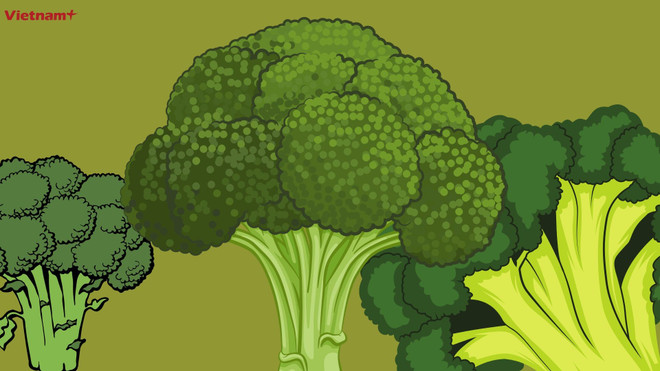Nutritionists say consuming more vegetables may be the easiest way to improve the quality of your meals.
However, for many of us, vegetables are not our first choice of food.
It is estimated that about 90% of Americans do not meet the goal of eating about two and a half cups of vegetables per day.
Meanwhile, about 59% of the Vietnamese population does not eat enough vegetables and fruits compared to recommendations according to the results of the National Survey on Non-Communicable Disease Risk Factors (STEPS) in 2021 by the Ministry of Health .
Nutritionist Sharon Palmer offers some good reasons to increase your vegetable intake.
“Most experts agree that a wide variety of natural vegetables is associated with many health benefits, such as a reduced risk of obesity, heart disease, type 2 diabetes and heart disease,” she said.
“These amazing foods are low in calories and fat, but rich in fiber, vitamins, minerals, and phytonutrients that have antioxidant and anti-inflammatory compounds.”
If you want to give your body more of what it needs, pay attention to your vegetable intake throughout the day, says Palmer.
“Many people don’t even eat their first vegetable until dinnertime, and by then it’s too late to meet their body’s needs,” she says. “A piece of tomato on a sandwich doesn’t count as a serving of vegetables.”
Which vegetables should we start with?
The top choice of many nutritionists is any green vegetable.
“Green leafy vegetables are packed with vitamins and minerals, as well as plant compounds,” says Palmer.
“Green leafy vegetables help protect eyes and bones, the digestive system, boost gut microbiota, and promote brain and heart health,” adds Palmer.
Nutritionist Jerlyn Jones offers similar advice, citing spinach, collard greens, kale, and bok choy as some of her top picks.
“I can't just pick one dark leafy green, because they're all great sources of iron, antioxidants, and vitamin A, which helps maintain eye health, and calcium, which helps keep bones strong,” says Jones.
Broccoli is choice number 2.
If you're looking for something a little crunchier, experts say broccoli is a perfect choice.

“It’s a non-starchy vegetable that’s low in carbohydrates and provides a great source of nutrients,” says registered dietitian Toby Smithson, senior director of nutrition and wellness at the American Diabetes Association.
“Broccoli is loaded with vitamin C which boosts our immune systems and also contains bone-building nutrients, vitamin K and calcium,” says Toby Smithson.
This vitamin K is particularly impressive, says nutritionist Marissa Karp: "Broccoli supports bone health, blood clotting, and reduces oxidative stress on the brain, which is a factor in Alzheimer's disease."
“Broccoli is also a good source of fiber, which can help slow the absorption of carbohydrates, but also has the double benefit of containing soluble fiber, which can help lower cholesterol levels,” says Smithson.
In addition to the above vegetables, sweet potatoes, radishes, and artichokes are also foods with high nutritional value and great flavor.
Green peas: “They’re a great source of plant-based protein,” says Jones. “They’re high in fiber, which helps keep you full longer. They’re also rich in saponins, which are plant compounds that may help protect against oxidative stress and cancer.”
Radishes: “This is a really good vegetable to try,” says Smithson. “They're really great boiled, because they lose their bitterness when cooked.”

Sweet potatoes: “They’re high in vitamin A, an important nutrient that helps maintain night vision and prevent cataracts and macular degeneration,” says Jones. “Sweet potatoes also contain fiber, potassium, and vitamin C.”
Tomatoes: “Yes, they’re technically a fruit,” Karp notes, but she can’t help but point out their benefits. “They’re loaded with antioxidants like lycopene, beta-carotene, and flavonoids,” she says.
“Lycopene is especially linked to a reduced risk of heart disease and cancer,” Karp notes. “The beta-carotene in tomatoes helps maintain eye health as we age. And tomatoes actually become more nutritious when you cook them, because heat increases the bioavailability of lycopene.”
Source: https://www.vietnamplus.vn/loi-khuyen-danh-cho-nhung-nguoi-khong-thich-an-rau-post1015205.vnp






























































![[Infographic] Circular guiding the functions, tasks and powers of the provincial Department of Culture, Sports and Tourism and the commune-level Department of Culture and Social Affairs](https://vphoto.vietnam.vn/thumb/402x226/vietnam/resource/IMAGE/2025/6/29/877f24989bb946358f33a80e4a4f4ef5)































Comment (0)